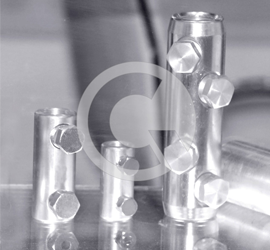Let’s Check Out What’s Really Happening With Shear Head Connectors

Shear head connectors have replaced all other orthodox tools in the termination of high voltage and medium voltage electrical cables. They are designed to have a compact size and result in a reliable connection between the cables. Here under, we detail you a few technical aspects of the shear head connectors.
Tin plated aluminum alloys are highly preferred to manufacture the bodies of the shear head connectors. Each connector is designed to accommodate a range of conductor sizes. Apart from using them for terminating cables, they are used to deal with cable accessories. Their edges are chamfered and for their use in some specific applications an oil barrier is placed. The heads of contact bolts are hexagonal and are shear headed. The manufacturer specifies the type of lubricant to be used on the bolts. These bolts can’t be removed once the head shears off. In the applications of smaller conductors, the connectors are provided with inserts which guides and positions the conductor cables precisely.
For low voltage and medium voltage applications, mechanical shear head connectors made of aluminum alloys is highly desirable. Tin is used to plate the surface of these connectors so that high contact resistance of the oxide layer can be eliminated. The conductor has to be grooved at the contact area so that oxide layer of the aluminum can be eliminated. This increases the contact area and results in a firm joint.
In general, the connectors are designed to accommodate a wide range of conductors. The following conditions have to be satisfied to carry out the installation of the joints:
Avoid employing additional tools like torque wrench for the installation process. However, if the conductor cable bends during this process, we can employ a support tool.
A perfect installation process doesn’t result in an excess length of the bolt. Failing to do so can damage the joint regions.
The application of the torque on the bolt has to be uniform. Application of higher torque can rupture the contact surface.
The contact resistance has to be kept low to ensure prolonged life of the connectors. This contact resistance can also significantly affect the distribution of current in the connector.
It is advisable to stick to the manufacturer’s instructions for the installation process.
The resistance on the connector is largely affected by the clamping torque of the bolt. One has to make sure that optimum torque is applied on the connector. Application of lower torque levels can increase the contact resistance. Similar malfunctions can be encountered if the torque is too high. Since, the conductors are manufactured from either aluminum or copper, intense clamping force can damage them. Moreover, it is tough to control the jointer at higher torque levels.
One has to communicate the specifications of the connectors effectively to obtain the desired connectors for the cables. Get to know about the connections, cable range and maximum tap size and stud size before ordering the product. Strictly confine yourselves to the instructions stipulated by the provider while handling them.
